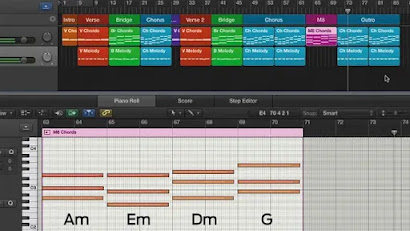How To Make a Simple Song
HOw To Make Song
Inspiration and Concept:
- Start with an idea or inspiration. It could be a personal experience, emotion, or a story you want to tell.
- Decide on the mood or theme of the song.
- Write the lyrics. Focus on expressing your theme or story in a way that
- resonates with your audience. Consider the song structure: verses, choruses, bridges, etc. Many popular songs follow a verse-chorus-verse-chorus-bridge-chorus structure.
Melody:
Create a melody that complements your lyrics. Experiment with different musical ideas on an instrument or use your voice.
Pay attention to the rhythm and flow of the melody.
Chords and Harmony:
- Choose chords that fit well with your melody and enhance the emotional impact of your song.
- Experiment with chord progressions to find the right balance between tension and resolution.
Arrangement:
- Decide on the arrangement of different sections (verse, chorus, bridge) in your song.
- Consider dynamics, instrumentation, and how the arrangement supports the emotional journey of the song.
Instrumentation and Production:
- Choose the instruments that best suit your song. This could include drums, bass, guitar, keyboards, and more.
- Experiment with production elements like effects, EQ, and reverb to enhance the sound.
Recording:
- Record your vocals and instrumentals. This can be done in a studio or at home using recording software.
- Pay attention to the quality of the recording and consider multiple takes to get the best performance.
Music Making Software:
Ableton Live:
- A versatile and popular choice for electronic music production. It's known for its session view, which allows for intuitive live performance.
FL Studio:
- A user-friendly DAW (Digital Audio Workstation) with a strong focus on electronic music. It features a pattern-based sequencer and excellent built-in instruments.
Logic Pro X:
- A professional-grade DAW for Mac users, offering a wide range of virtual instruments, audio effects, and advanced features.
Pro Tools:
- Widely used in professional studios, Pro Tools is known for its powerful recording, editing, and mixing capabilities.
Cubase:
- A comprehensive DAW that caters to various genres, providing advanced MIDI capabilities and a range of virtual instruments.
Studio One:
- A modern DAW with a user-friendly interface and powerful features for music production, recording, and mixing.
Reason:
- Known for its virtual rack setup, Reason offers a unique approach to music production, allowing users to visually connect virtual devices.
Bitwig Studio:
- A relatively newer DAW that combines traditional linear sequencing with a clip-based performance environment.
Mixing:
- Mix the individual tracks to create a balanced and polished sound. Adjust volumes, pan positions, and add effects as needed.
- Ensure that each instrument and element can be heard clearly in the mix.
Mastering Software:
iZotope Ozone:
- A comprehensive mastering suite with modules for EQ, dynamics, saturation, and more. It's widely used in professional mastering studios.
Waves Abbey Road TG Mastering Chain:
- This plugin emulates the mastering chain used at Abbey Road Studios, offering a classic analog sound.
LANDR:
- An AI-driven online mastering service that can quickly master your tracks based on genre and preferences.
FabFilter Pro-L 2:
- A popular and transparent limiter used for maximizing loudness during mastering.
T-RackS:
- A suite of analog-modeled mastering plugins, providing a range of tools for EQ, compression, and more.
Mastering The Mix - LEVELS:
- A plugin that helps you ensure your mix and master meet certain technical standards for streaming and distribution.
Sonnox Oxford Dynamics:
- A high-quality dynamics processor often used in mastering for transparent compression and limiting.
Windows: https://www.google.com/search?q=Best+Windows+Music+softwate&oq=Best+Windows++Music+softwate+&gs_lcrp=EgZjaHJvbWUyBggAEEUYOTIICAEQABgNGB4yCggCEAAYCBgNGB4yCggDEAAYCBgNGB4yCggEEAAYCBgNGB4yCggFEAAYCBgNGB4yCggGEAAYCBgNGB4yCggHEAAYCBgNGB4yCggIEAAYCBgNGB4yCggJEAAYCBgNGB7SAQkyNDE1N2owajSoAgCwAgA&sourceid=chrome&ie=UTF-8









.webp)
Comments
Post a Comment